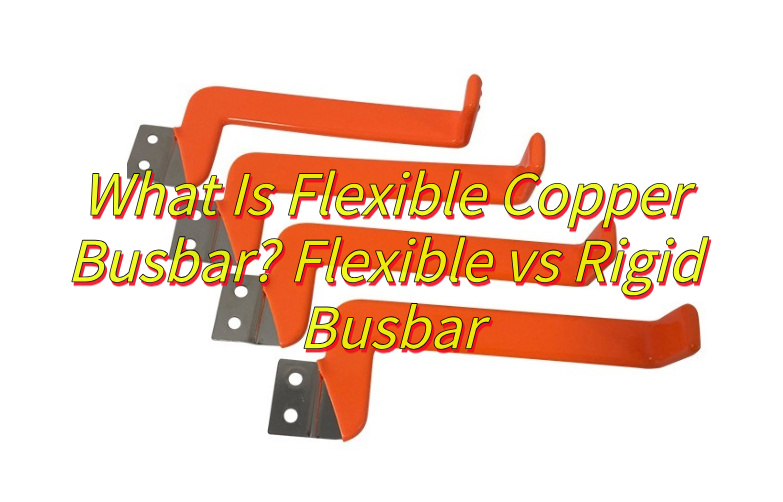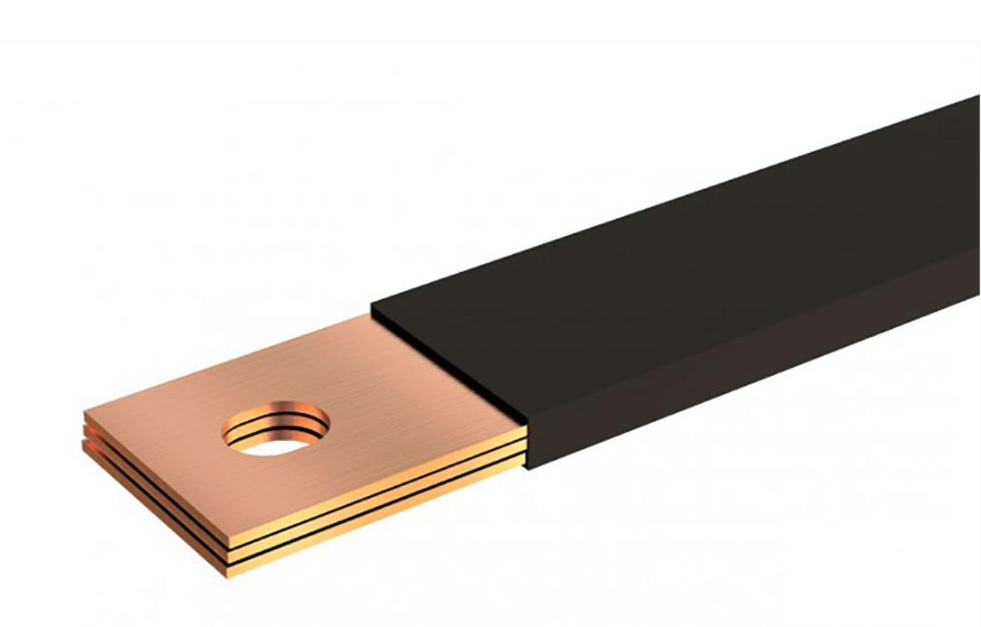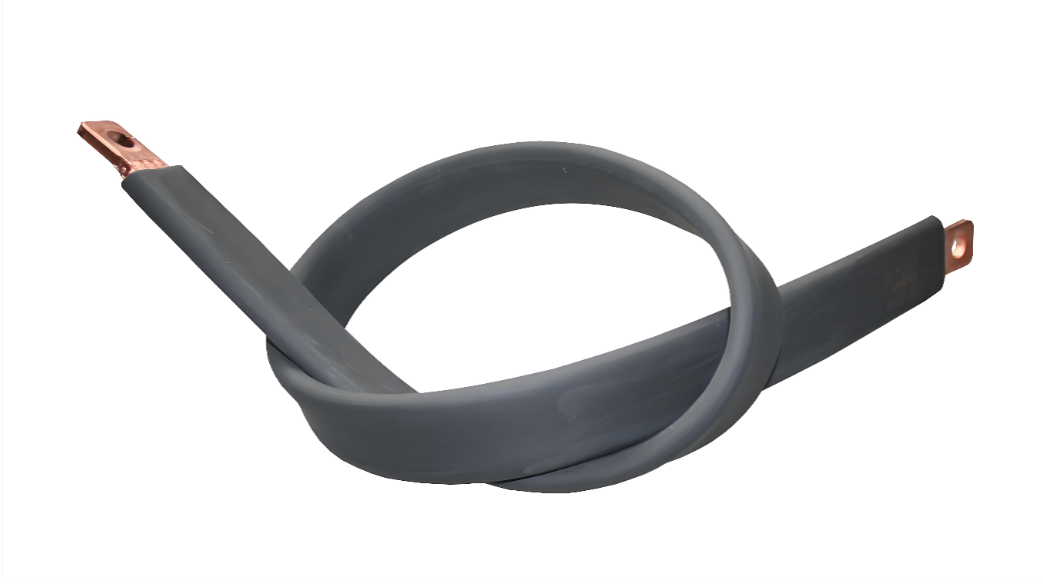What is flexible copper busbar? Let’s discover its definition, difference between rigid busbar, application, benefits, production processes, price, and market trends through this blog.
Are you worried about these questions?
- How to efficiently transmit power in confined spaces?
- How to prevent copper busbar fractures under frequent vibration?
- How to balance conductivity and flexibility for high-current applications?
EBest Circuit (Best Technology) can provide service and solution:
- Multi-layer copper foil diffusion bonding: enables arbitrary bending with stable current carrying capacity.
- Arc-embedded design: Reduces fatigue failure, extending lifespan by 300%.
- Micro-arc oxidation treatment: Achieves contact resistance as low as 0.017μΩ·m.
Welcome to contact us if you have any request for flexible copper busbar: sales@bestpcbs.com.
What Is Flexible Copper Busbar?
Flexible copper busbar (also known as soft copper busbar or flexible busbar) is a highly conductive, bendable electrical component designed for high-current transmission in compact or dynamic environments. It combines the current-carrying capacity of rigid busbar with the flexibility of flexible circuits, typically made by stacking copper foil layers and diffusion welding (or other high-pressure bonding methods) to form a seamless, durable connection.

Which is Better Flexible or Rigid Busbar?
1. Vibration Resistance
- Flexible Busbar: Specifically designed for high-vibration environments, capable of absorbing mechanical shocks and preventing connection loosening.
- Rigid Busbar: Structurally stable but lacks elasticity; continuous vibration may lead to stress fatigue and fracture.
2. Space Adaptability
- Flexible Busbar: Can be bent/folded, saves 25% installation space, supports curved installation, and requires no custom brackets.
- Rigid Busbar: Requires precise pre-planning of layout, cannot be adjusted on-site, and has low applicability in compact spaces.
3. Current-Carrying Capacity
- Flexible Busbar: Laminated design may limit instantaneous high current.
- Rigid Busbar: Solid structure supports higher current capacity (>1000A scenarios) with excellent heat dissipation.
4. Long-Term Stability
- Flexible Busbar: Repeated bending may reduce durability; requires regular inspection in frequent-movement scenarios.
- Rigid Busbar: Lifespan up to 30 years, low maintenance needs, and connection points are less prone to aging.
5. Installation & Maintenance Costs
- Flexible Busbar: Reduces connector usage by 90%, shortens installation time by 40%, and lightweight design simplifies maintenance.
- Rigid Busbar: Requires customized production, complex installation, and overall replacement for later modifications, leading to higher total costs.
6. Material & Manufacturing Costs
- Flexible Busbar: Higher raw material costs (approx. 20-30% more expensive) but lower total engineering costs.
- Rigid Busbar: Lower base material costs, but significant customization and processing fees.
7. Applicable Scenarios
- Flexible Busbar: Electric vehicle battery packs, robot joints, compact distribution cabinets.
- Rigid Busbar: Substations, fixed distribution panels, high-power industrial equipment.
8. Advantages
- Flexible Busbar: Vibration-resistant, high space utilization, quick installation.
- Rigid Busbar: High current capacity, long lifespan, strong stability.
9. Selection Tips
- Choose Flexible Busbar: For vibration-prone, space-constrained, or rapid-installation needs (such as new-energy vehicles, mobile devices).
- Choose Rigid Busbar: For extreme current-carrying demands, zero-maintenance requirements, and stable environments (such as data centers, factory main power distribution).

What Is a Flexible Busbar Copper Used for?
- New Energy Vehicles: Battery pack module connections, Motor controller high-voltage interconnections
- Renewable Energy & Storage: PV inverter DC-side links, BESS battery cluster interconnections
- Data Centers & Servers: GPU high-density power cooling, Cabinet-level short-distance efficient power transmission
- Industrial Automation: VFD/servo drive power module links, Welding robot power systems
- Specialized Electrical Equipment: Rail transit traction systems, Medical imaging equipment (e.g., MRI)
- Consumer Electronics & Appliances: Inverter AC compressor drives, EV charger internal high-voltage circuits
How to Make a Flexible Busbar?
Manufacturing Process of Flexible Busbar:
1. Material Preparation
- Conductive Material: Select high-conductivity, corrosion-resistant T2 red copper as the primary conductive material to ensure current-carrying capacity and flexibility.
- Insulation Material: Use high-performance insulating materials such as epoxy resin, rubber, or silicone for electrical insulation.
- Armor Material: Apply stainless steel or other metal alloys as outer armor to enhance mechanical strength and corrosion resistance.
2. Copper Plate Cutting & Rolling
- Cutting & Thinning: Cut copper plates into required dimensions and roll them into thin strips to form flexible conductive busbar structures.
- Layered Design: The first flexible conductive busbar adopts a dual-layer structure, with each layer composed of multiple fine copper strands for enhanced flexibility.
3. Softening Treatment
- Heat Treatment: Anneal or apply high-temperature processing to reduce hardness, improving flexibility and fatigue resistance for repeated bending.
4. Conductive Busbar Forming
- First Busbar Preparation: Roll processed copper into the first flexible busbar, featuring widthwise support ribs on its upper/lower walls.
- Second Busbar Preparation: The second flexible busbar consists of multiple arc-shaped connecting pieces forming a cylindrical structure, with internal grooves to accommodate the first busbar.
5. Busbar Assembly
- Structural Interlocking: Insert the first busbar into the second busbar, ensuring tight contact between support ribs and grooves for stable stacking.
- Fixing Method: Secure interfaces of the second busbar via diffusion welding or soldering for robust conductivity.
6. Welding & Polishing
- Interface Welding: Precision-weld the second busbar’s joints to prevent loosening or fractures.
- Burr Removal: Polish welded areas to eliminate sharp edges, ensuring smooth surfaces and avoiding electrical faults.
7. Insulation Treatment
- Insulation Wrapping: Encapsulate the second busbar with insulating layers (e.g., epoxy/silicone) via dip-coating, controlling thickness for voltage requirements.
- Curing: Heat-cure the insulation to ensure bubble-free adhesion.
8. Metal Armoring
- Armor Wrapping: Cover the insulation with stainless steel armor for mechanical protection against physical damage and corrosion.
- Sealing: Achieve seamless integration between armor and insulation for optimal durability.
9. Quality Testing
- Electrical Tests: Measure resistance, insulation resistance, and withstand voltage to verify compliance.
- Mechanical Tests: Conduct bending, tensile, and fatigue tests to validate flexibility and longevity.
- Visual Inspection: Check surface smoothness, structural integrity, and joint reliability.
10. Packaging & Application
- Custom Packaging: Coil or fold busbars based on applications (e.g., EV batteries, robotic joints) for easy transport/installation.
- Scenario Adaptation: Provide tailored designs for high-vibration, compact-space, or high-current environments.

How Much Is a Flexible Copper Busbar Worth?
Low-End Flexible Copper Busbars
- Price: $0.23–$1.38 per meter.
- Features: Thin copper layers, standard insulation, and simpler designs for low-current applications.
Mid-Range Flexible Copper Busbars
- Price: $2.76–$13.81 per piece.
- Features: Enhanced flexibility, higher current capacity, and improved insulation for industrial or automotive use.
High-End Flexible Copper Busbars
- Price: $122.65–$276.24 per piece
- Features: Advanced materials (e.g., T2 copper), precision manufacturing, and specialized insulation for extreme environments.

What is the Market Trend of Flexible Copper Busbar?
Demand-Side Drivers: New Energy & Electrification Fuel Growth
- EV Boom: Global EV sales surpassed 18 million units in 2024, driving 25%+ YoY demand growth for flexible copper busbars as critical battery pack connectors.
- Renewable Energy Expansion: China’s 2025 solar installation target of 500GW directly boosts market demand for vibration-resistant flexible busbars in PV/wind power plants.
- Industrial Automation Upgrade: Collaborative robot joint wiring needs spur adoption of miniaturized flexible busbars, with market size projected to exceed $300M by 2025.
Technological Innovations: Material & Process Breakthroughs
- Thin Copper Foil Adoption: Maturation of 0.05mm copper foil paired with polymer insulation layers has extended busbar bending lifespan to 100,000 cycles (vs. ~50,000 for conventional products).
- Integrated Design Leadership: Tesla’s 4680 battery cells adopt “busbar + heat sink” monolithic structures, reducing volume by 20% and setting industry benchmarks.
- Green Manufacturing Mandates: EU regulations requiring ≥30% recycled copper content push vendors to optimize laser-based paint removal for recycling.
Regional Dynamics: Asia Dominates, Europe/US Target Premium Segments
- China’s Production Hub: Yangtze River Delta/Pearl River Delta clusters account for 60% of global capacity, though price competition has compressed margins below 15%.
- European/US Premiumization: Local producers like Germany’s Vogel command 2x pricing for corrosion-resistant armored busbars, targeting aerospace/defense sectors.
Challenges & Opportunities
- Aluminum Substitution Risks: Experimental aluminum-clad copper busbars reduce costs but suffer 35% conductivity loss, limiting mainstream adoption.
Emerging Applications:
- Data Center Liquid Cooling: Flexible busbars replace traditional cables, cutting wiring space by 80%.
- Humanoid Robots: Tesla Optimus finger joints require <3mm diameter micro busbars, posing steep technical barriers.
Outlook (2026-2030)
- Market Growth: Global flexible copper busbar market to sustain 12-15% CAGR, potentially surpassing $5B by 2030.
- Smartization Trend: Fiber-optic sensor-embedded “smart busbars” enabling real-time temperature monitoring will become standard in high-voltage grids.
Why Choose EBest Circuit (Best Technology) as Copper Busbar PCB Supplier?
Reasons why choose us as copper busbar PCB manufacturer:
Competitive Pricing
- Cost-effective solutions with 15-20% lower pricing than industry averages, without compromising quality.
- Transparent quotes with no hidden fees, optimized for bulk orders and long-term partnerships.
Uncompromising Quality
- ISO 9001-certified production with 100% electrical testing and AOI inspection.
- Premium materials: T2 copper, UL-approved insulation, and RoHS-compliant components.
Fast Turnaround Times
- 7-10 day lead times for standard orders (50% faster than industry average).
- Expedited 48-hour delivery for urgent prototypes.
Customization Flexibility
- Tailored designs for space-constrained applications (e.g., ultra-thin 0.2mm busbars).
- Support for multi-layer stacking, embedded cooling channels, and custom shapes.
Advanced Technical Capabilities
- In-house R&D team with 50+ patents in diffusion welding and stress optimization.
- High-precision laser cutting and CNC machining for complex geometries.
End-to-End PCBA Assembly
- One-stop service: PCB fabrication + SMT assembly + functional testing.
- Integration of flexible busbars with sensors, connectors, and thermal pads.
Dedicated Customer Support
- 24/7 technical assistance via engineers with 10+ years of industry experience.
- Real-time order tracking and proactive risk mitigation for delays.
Industry-Proven Expertise
- Trusted by Fortune 500 companies in EV, renewable energy, and aerospace sectors.
- 98% client retention rate over 5+ years of collaboration.
Welcome to contact us if you have any request for copper busbar PCB: sales@bestpcbs.com.


